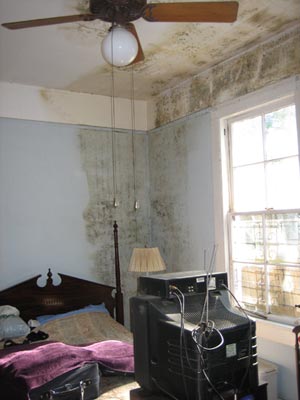Uninformed contractors’ moisture prevention advice goes wrong
Bonnie and Joe Meteye bought their Metairie home eight months after Hurricane Katrina. Though the house had flooded, they didn’t feel replacing the original wood floors was necessary at the time. It was five years later, when the Meteyes were adding on to their home, that they decided to renovate the downstairs flooring.
That should have been the end of the story. Instead, the Meteyes discovered two years after the renovation that the new floors were disintegrating just as rapidly as the original floors had. Frustrated with their previous contractor’s lack of communication, knowledge, and experience, Bonnie decided to find new contractors to undertake the next renovation.
She came across Sunlight Contractors after a quick Google search for Louisiana contractors with experience in repairing moisture damage. The abundance of positive reviews convinced her that these contractors were capable of helping.
Though Bonnie was still anxious due to past contractor experiences, a phone call with Sunlight Contractors’ owner Corey Yates convinced her that if anyone could help, he could. Yates visited the Meteyes’ house, exploring the crawl space, performing a blower door test, and inspecting for moisture-related problems. He found that humidity had done more damage than rotting wood – it had also created an ideal environment for mildew to grow.
Yates sent samples from throughout the Meteyes’ house to a certified mildew lab. The results confirmed that the floorboards and even the walls were home to high levels of mildew in a variety of species.
A moisture damage remediation solution from a Louisiana expert
The first step in remediating the Meteyes’ moisture and mildew problem was to clear out the contributors to mildew growth, and that included 1400 square feet of batt fiberglass insulation installed on the attic ceiling. Fiberglass insulation traps moisture close to wood surfaces, creating moisture pockets that encourage mildew growth.
The Sunlight Contractors team arrived early on a Friday morning for the next step: cold fogging the home’s open sheetrock area and subflooring with EPA-certified MoldStat to kill existing mildew and to prohibit the growth of mildew in the future. The attic roof deck, rafters, and beams were further cleansed with a spray borate solution.
Next, the contractors equipped the Meteyes’ home with an Aprilaire whole-house dehumidification system. The system seamlessly integrates with the Meteyes’ existing HVAC system, but it will continue to pull moisture from the air even when the HVAC isn’t running.
Sunlight installed 1,767 square feet of Gaco Western Fire Stop 2 open-cell spray foam at an average thickness of eight inches in the Meteyes’ attic, fully covering rafters, top plates, eaves and soffits.
Open cell spray foam’s porous structure allows moisture to pass through it, making it an ideal application for roof decks. The foam seals in the ceiling, preventing air loss, but should a leak spring in the roof, the moisture won’t stay trapped between the roof deck and the insulation as with fiberglass or even closed cell spray foam insulation.
The open cell spray foam also helps to regulate temperatures in the attic, which prevents the wild fluctuations that contribute to condensation. Preventing condensation, especially in and around attic ductwork, also prevents the growth of mildew that ductwork would distribute throughout the house.
Finally, Yates and his team installed 1,368 square feet of Gaco Western closed cell spray foam at a thickness of 3 inches to the Meteyes’ subfloor. Like open-cell spray foam, the closed-cell foam quickly expands, enveloping pipes, wires, and cross-bridging while sealing any potential air leaks. Unlike open-cell spray foam, however, closed-cell foam is water impermeable. It completely encapsulates the Meteyes’ crawl space in a monolithic, airtight barrier.
In the crawlspace, this is particularly important. Damp earth leeches its moisture into the air, and from there the moisture invades treated and untreated wood alike, causing rot, mildew, and even termite infestation. Closed-cell spray foam’s impenetrable nature makes it the best solution to subflooring at the mercy of southern Louisiana’s humidity.
A moisture damage remediation solution with benefits
“Now that the project is complete,” Bonnie tells us, “the difference in our house is huge. The humidity level has decreased significantly and the air conditioner actually clicks on and off rather than running 24/7. I can hardly wait till next summer to see how much our Entergy bill will be.”
By combining innovative, energy-efficient spray foam insulation with proper ventilation and damage restoration, the Meteyes will have a more comfortable, more affordable, and healthier home. And Bonnie can find comfort in the knowledge that she’s found a reliable contractor to call and recommend to her friends.

